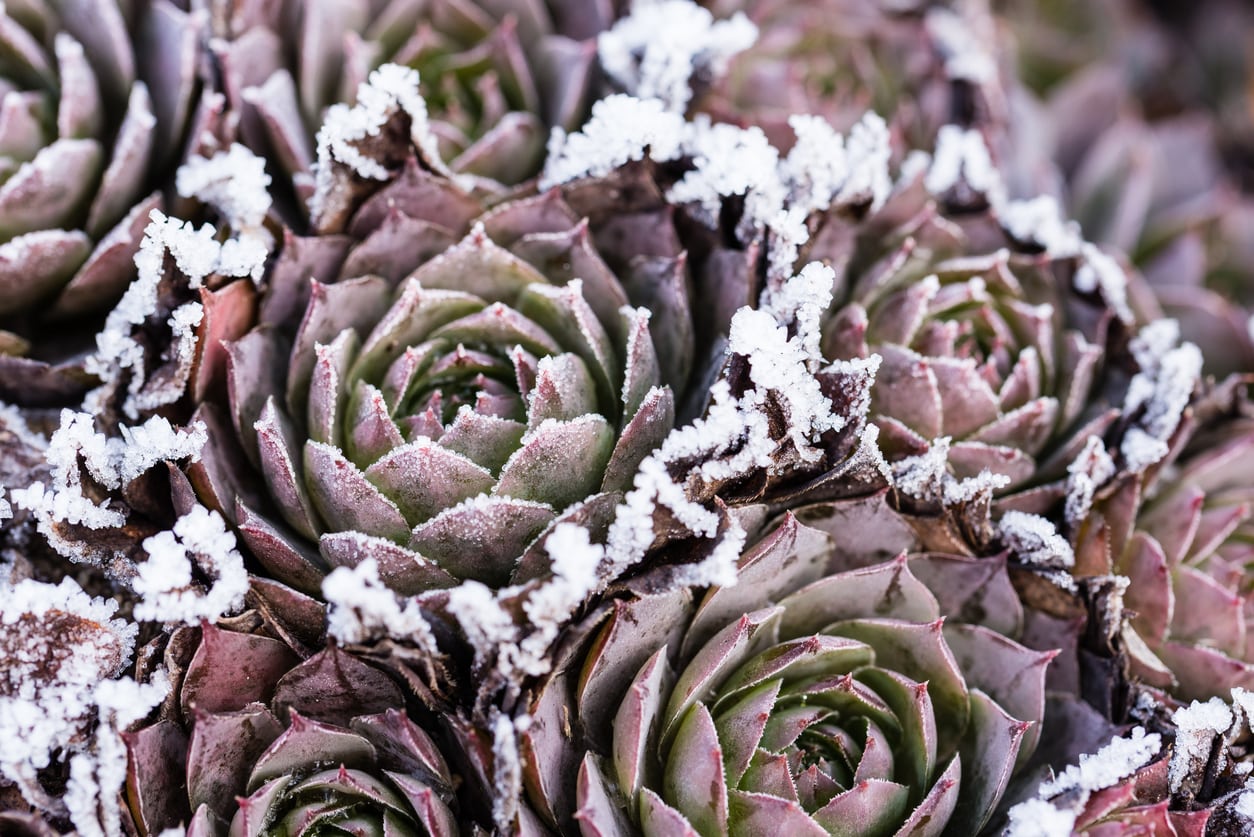Cold Climate Succulents – Learn About Growing Succulents In The Cold


All the rage in outdoor gardens, succulent plants adorn the landscape in many areas. They grow in those spots where you’d expect to find them, such as California and Florida. For those of us with cold winters, we have different issues and decisions to make about which succulents to grow and when to plant succulents in cold climates. Read on to learn more.
Cold Climate Succulent Gardening
In colder climates, succulent lovers have the following options for growing succulents in the cold: Plant them and cross your fingers. Plant all succulents, both soft and hardy in the ground, in appropriate soil, and see how long they last. When planting, you should consider current fluctuations in the weather patterns and when you’re likely to see the last frost. Late winter to late spring, depending on your climate, is the optimum time for planting the majority of succulents. However, there are exceptions. Treat them as annuals. Grow succulent plants as annuals that you’ll remove or discard before freezing temps begin or after they’re damaged by frost. You’ll likely be surprised by a few that are more cold hardy than you realized. Some succulent plants that take cold are not recognized as such in their info and you only learn by growing succulents in the cold. Most, however, have reliable information posted somewhere, if you have the time and inclination to research them. For instance, a recent blog says the heat-loving agave is good to 20 degrees F. (-6 C.) and some species take temperatures that are lower. Who knew? You may already have cold climate succulents growing in your beds and containers. Know your plants. A time-consuming undertaking, but if you’re familiar with each type, you’ll know when to plant and how much cold the plant can take. Until you get to that point, use traditional planting times. Late winter to spring is best, before it gets too hot. Late summer/early autumn also allows outdoor plants time to establish a good root system before cold temperatures arrive. A good place to start when looking for succulent plants that take cold are sempervivums, sedums, and the little known rosularia. Be aware of your growing conditions. Sources on this subject indicate that it’s often not cold weather that kills succulents, it is the combination of wet soil without proper drainage combined with the temperatures. Consider the choices available in your situation, such as areas that are covered and protected. Proper soil amended for fast drainage keeps water from lingering on the roots of your succulent specimens. Plant fresh beds in these areas in late summer. Your plants will be young and healthy, mature enough to take on the challenge of colder temps. Keep your eye out for color changes during this time, cooler temperatures stress some plants just enough to bring out bright colors that pop. Consider container planting. Plant all succulents in containers instead, watching their development as you research to identify their names and their growing season. When you discover those that are cold hardy to your zone, get them into the ground during the next good planting time. Cloudy days followed by gentle rain showers are a good time to settle plants into their long-term situation. Avoid planting during a heatwave.
Sign up for the Gardening Know How newsletter today and receive a free copy of our e-book "How to Grow Delicious Tomatoes".

Becca Badgett was a regular contributor to Gardening Know How for ten years. Co-author of the book How to Grow an EMERGENCY Garden, Becca specializes in succulent and cactus gardening.